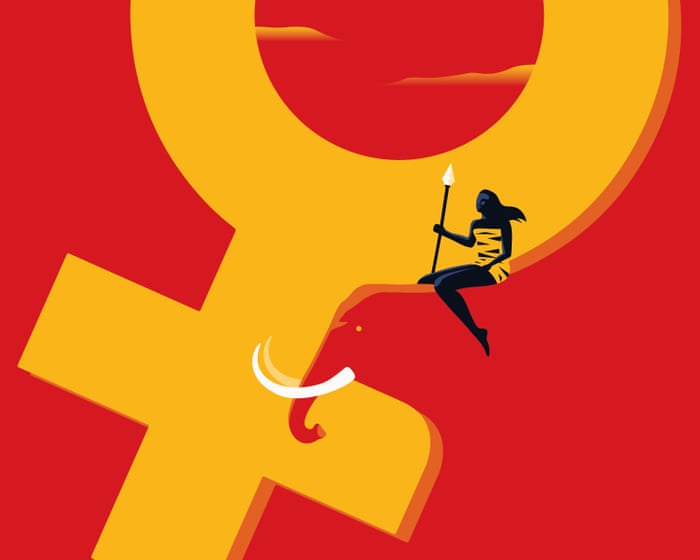A persistent and popular belief suggests that in an earlier era, women held equal or even superior status to men, leading to happier and more peaceful societies. Then patriarchy emerged, bringing conflict and oppression, and shaping the world we know today.
This idea of matriarchy and patriarchy as complete opposites, with a clear shift from one to the other, originated in 19th-century Marxist thought and entered archaeology with little evidence, eventually spreading into public awareness.
Anthropologists were often more doubtful. They observed great variety in gender roles across both modern and historical societies and suspected that such diversity was also the norm in prehistory. However, proving this was challenging, partly because determining biological sex—let alone gender—from ancient remains was difficult. That changed about two decades ago.
The ancient DNA revolution—the ability to extract and analyze DNA from old bones—suddenly made it possible to identify the sex of long-deceased individuals and trace their relationships. Chemical analysis of bones and teeth, particularly the ratios of certain isotopes, revealed whether people had moved between regions or changed their diets. These new tools show that diverse gender relations were indeed common in prehistoric times, with no abrupt switch from one system to its opposite.
The Marxist view, often attributed to Friedrich Engels, proposed that humans lived equally until agriculture spread from the Middle East around 10,000 years ago. Farming led to settled lives and wealth accumulation, which required defense and inheritance rules. As populations grew, men dominated the emerging elites, partly due to their roles in warfare, and wealth began passing through male lines. Women often moved to live with their husbands’ families, and female oppression became a side effect of these shifts.
An alternative theory from Lithuanian archaeologist Marija Gimbutas in the 1960s suggested that female-centered societies persisted longer in Europe—until about 5,000 years ago—when they were overthrown by patriarchal nomads from the steppes.
Matrilineality, where inheritance follows the female line, and matrilocality, where women stay with their kin, often coincide and are linked to greater female status and influence. In 2017, American geneticists found evidence of an elite matrilineal group in Chaco Canyon, New Mexico, that lasted over 300 years around the 10th century. Then, in June, Chinese researchers reported a similar matrilineal farming community in eastern China from more than 3,000 years earlier. These discoveries, along with others, indicate that matrilineal societies have existed on every inhabited continent, at least since agriculture began.
However, even in matrilineal societies, women don’t always hold decision-making power; that often remains with their brothers rather than their husbands. Since ancient DNA and isotopes reveal little about women’s actual influence, gender dynamics in prehistory are still debated. This research has pushed experts to reconsider what “power” means. If a female consort to a male ruler shaped his circle through patronage and advice, or influenced his policies behind the scenes, was she any less powerful?
Archaeologists have identified several Bronze Age couples who ruled together—after the arrival of steppe nomads in Europe—and later historical records show elite women influencing decisions in similar ways across different continents. It’s likely they did so in earlier times as well.Moreover, the use of soft power by women in male-dominated societies might even predate Homo sapiens. In his 2022 book on sex and gender, “Different,” primatologist Frans de Waal recounts how Mama, an alpha female chimpanzee, endorsed a successor to the alpha male—who held a higher rank than her—with a kiss.
In recent times, another insight has emerged. While Engels may have been generally correct in linking wealth to patrilineal systems, other elements also influenced gender dynamics, such as a society’s means of subsistence. In February, Chinese and British researchers noted that traditionally matrilineal villages in Tibet have become more gender-neutral over the past 70 years as they transitioned from an agricultural to a market-based economy.
Conflict also plays a role. According to Yale anthropologist Carol Ember, while matrilocal and patrilocal societies are equally prone to warfare, internal strife—as opposed to external wars—tends to push societies toward patrilocality, as feuding clans prefer to keep their sons nearby.
Meanwhile, mounting evidence suggests that women in ancient times fought, hunted, and served as shamans. No role or position has been universally or perpetually closed off to them. And although female leaders may have been uncommon, they were not entirely absent. Recent ancient DNA research from Trinity College Dublin reveals that there were at least small pockets of matrilineal societies throughout Britain during the Iron Age, when Celtic tribes controlled the island. Alongside archaeological finds of female warriors and Roman accounts of female tribal chiefs, it appears that Celtic women could exercise both hard and soft power.
Matrilineal societies still exist today, such as China’s Mosuo and Arizona’s Hopi, descendants of the Chaco Canyon clans. Their numbers are declining as national governments assert patriarchal norms, but they serve as reminders that some past societies leaned more toward gender equality than many modern ones, and that all societies have the potential to evolve.
Further reading:
– “Different: What Apes Can Teach Us About Gender” by Frans de Waal (Granta, £10.99)
– “The Patriarchs: How Men Came to Rule” by Angela Saini (4th Estate, £10.99)
– “Eve: How The Female Body Drove 200 Million Years of Human Evolution” by Cat Bohannon (Penguin, £12.99)
Frequently Asked Questions
Of course Here is a list of FAQs about gender equality in prehistory with clear and concise answers
Basic Definition Questions
1 What does prehistory actually mean
Prehistory refers to the vast period of human history before the invention of writing systems It covers everything from the earliest humans to the rise of the first civilizations
2 So was prehistory a time of equality between men and women
The evidence suggests it was likely more equal than many later societies but not in the way we might think of equality today It was probably more about complementary roles where both mens and womens work was essential for survival rather than one gender dominating the other
3 How can we even know what life was like back then if theres no writing
Archaeologists use clues like burial sites artifacts and the study of modern huntergatherer societies to make informed guesses about social structures
Daily Life Roles
4 Was it just man the hunter woman the gatherer
Thats an oversimplification While men often hunted large game women were typically the primary gatherers of plant foods which provided the majority of the calories Evidence also shows women hunted small game and in some societies even large game Both roles were critically important
5 Did women have any power or influence in prehistoric groups
Yes likely a great deal As the primary gatherers and often the processors of food they had significant economic influence Their knowledge of plants medicine and childrearing was vital for the groups survival In many societies kinship may have been traced through the mothers line
6 What about physical strength Didnt that make men dominant
While men were often physically stronger survival in prehistory depended just as much on endurance knowledge and cooperation A womans ability to gather nutritious plants and her crucial role in reproduction were equally valued for the groups longterm survival
Evidence Complexities
7 Are there any archaeological finds that point to gender equality
Yes Some of the most famous evidence includes




